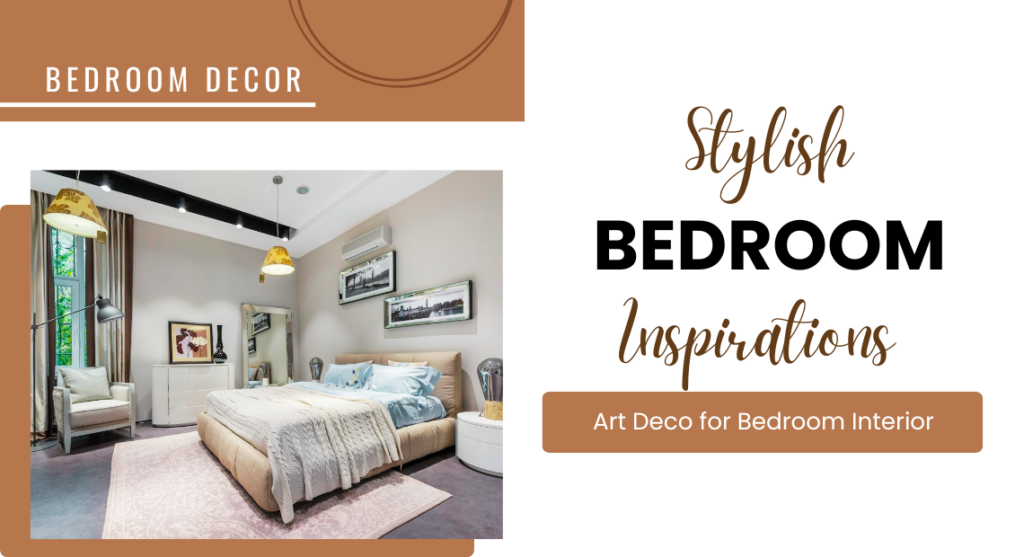Your living room is more than just a place to relax; it’s an opportunity to showcase your personal style. Integrating art into your living room design can enhance the atmosphere, inspire conversation, and reflect your unique personality. Here’s a simple guide on how to bring art into your space.
1. Create a Focal Point with Large Art Pieces
A large piece of art can become the centerpiece of your living room. Think about a bold painting, a striking sculpture, or an oversized photograph. Choose a piece that complements your room’s color scheme. For example, if your walls are neutral, a colorful artwork can add vibrancy. Hang it at eye level for the best effect, and consider lighting it to highlight its details.
Examples
- Abstract Canvas Painting: A vibrant abstract painting with bold colors can add energy to the room.
- How To: Choose a painting that speaks to you. Consider the size of your wall—aim for a piece that’s at least two-thirds the width of your sofa. Hang it at eye level and ensure it’s well-lit, either with natural light or targeted spotlights.
- Oversized Black-and-White Photograph: A large black-and-white photograph can add sophistication and a touch of drama.
- How To: Find a high-quality print that captures an emotional or striking moment. Frame it in a simple black or white frame to keep the focus on the photo. Use a gallery-style hanging technique with the center of the frame at eye level.
- Sculptural Wall Art: A three-dimensional piece made of metal or wood can add texture and intrigue to your wall.
- How To: Look for wall sculptures made of metal, wood, or mixed media. Choose a piece that complements your color scheme. Mount it securely on the wall and consider accent lighting to enhance its three-dimensionality.
2. Gallery Wall for Personal Expression
A gallery wall is a fantastic way to display multiple pieces of art. Pick a wall—perhaps above your sofa—and collect a variety of art forms, including paintings and photographs. Mix different sizes and styles to create visual interest. Lay the pieces out on the floor first to find the best arrangement, and feel free to include shelves for small sculptures or collectibles.
Examples
- Mixed Media Collection: Combine paintings, framed textiles, and small sculptures for an eclectic look.
- How To: Gather art in different mediums, such as paintings, textiles, and small sculptures. Lay them out on the floor to find an arrangement you love. Use painter’s tape to outline the layout on the wall before hanging each piece.
- Family Photo Wall: Create a gallery wall using a mix of family photos and artwork in matching frames for a personal touch.
- How To: Select a mix of family photos in different sizes. Use matching frames for cohesion or various styles for an eclectic feel. Arrange them on the floor first and then hang, ensuring the center of the arrangement is at eye level.
- Thematic Arrangement: Focus on a specific theme, like travel, with postcards, maps, and photos from your adventures.
- How To: Decide on a theme (e.g., travel). Choose photos, maps, and souvenirs that fit the theme. Use a consistent color palette for frames or backgrounds to tie the pieces together. Hang them in a grid or salon style for a curated look.
3. Functional Art: Furniture as a Canvas
Furniture can double as art. Look for unique pieces like an artistically designed coffee table or a colorful chair. These can add character while serving a practical purpose. For example, a geometric coffee table in a bold color can make a statement, while a vintage chair with artistic upholstery can enhance the room’s charm.
Examples
- Artistic Coffee Table: A coffee table with a unique shape or design, like a live-edge wood piece or one with an artistic print.
- How To: Look for a coffee table with a unique design or finish. Style it with a few decorative items, like a stack of art books and a small plant, to showcase its beauty while keeping it functional.
- Designer Accent Chair: A chair with bold upholstery or an unusual silhouette that stands out in the room.
- How To: Choose a chair that complements your existing furniture but stands out due to its design or color. Place it in a conversational area or as a reading nook, accentuating its artistic appeal.
- Colorful Ottoman: An ottoman covered in vibrant fabric or featuring an interesting pattern can serve as both seating and art.
- How To: Select an ottoman in a bold color or pattern. Use it as a footrest or extra seating, and style it with a tray to hold coasters or small decor items to highlight its artistic design.
4. Incorporate Textiles and Fabrics
Textiles are another way to introduce art into your living room. Consider using throw pillows, blankets, or rugs with unique patterns or colors. A vibrant rug can anchor the room, while colorful pillows can add texture. Tapestries or fabric wall hangings can also bring warmth and artistic flair to your space.
Examples
- Patterned Throw Pillows: Choose pillows with bold geometric patterns or abstract designs to add color and texture to your sofa.
- How To: Choose pillows in different patterns but within the same color palette. Layer them on your sofa, mixing sizes and shapes for added visual interest.
- Artistic Area Rug: A rug with a colorful design or an artistic pattern can ground the room and add warmth.
- How To: Select a rug that fits the size of your seating area. Ensure it complements or contrasts with your furniture. Place the front legs of your sofas and chairs on the rug to define the space.
- Wall Tapestry: A woven tapestry featuring an intricate design or landscape can serve as a stunning wall hanging.
- How To: Choose a tapestry that reflects your style. Hang it with decorative nails or hooks. Make sure it’s centered and at a height that is visually comfortable, typically around 6-12 inches above your furniture.
5. Utilize Lighting as an Artistic Element
Lighting can transform how art is perceived in your living room. Use track lighting or wall sconces to highlight specific pieces. Unique light fixtures, such as sculptural lamps or stylish chandeliers, can also act as art themselves. Adjustable lighting can help create the right mood for any occasion.
Examples
- Sculptural Floor Lamp: A uniquely shaped floor lamp that doubles as a sculpture can enhance the room’s aesthetics.
- How To: Select a lamp with a unique shape. Place it in a corner or next to a seating area to add both light and an artistic touch. Consider using a warm light bulb to create a cozy atmosphere.
- Chandelier with Artistic Flair: A modern or vintage chandelier with a striking design can serve as a statement piece.
- How To: Choose a chandelier that matches your style (modern, vintage, etc.). Hang it at a height that is appropriate for your ceiling—typically 30-36 inches above a dining table or 7 feet above the floor in general areas.
- Wall Sconces: Artistic wall sconces with interesting shapes or materials can illuminate your art while adding visual interest.
- How To: Install sconces on either side of a piece of art to highlight it. Choose a style that complements the artwork. Make sure they are at an appropriate height (around 60 inches from the floor) for visual balance.
6. Incorporate Plants for a Natural Touch
Plants add life and color to your living room and can be a form of art. Look for artistic planters or sculptural vases to display greenery. Consider a mix of hanging plants and potted varieties to create visual layers. A vertical garden can be a stunning focal point, especially in smaller spaces.
Examples
- Hanging Planters: Use stylish hanging planters to create visual height and interest, especially in corners.
- How To: Install sconces on either side of a piece of art to highlight it. Choose a style that complements the artwork. Make sure they are at an appropriate height (around 60 inches from the floor) for visual balance.
- Terrarium: A beautifully arranged terrarium can be a conversation starter and a mini ecosystem in your room.
- How To: Choose a glass container and layer pebbles, activated charcoal, soil, and plants. Position it on a coffee table or shelf where it can be appreciated.
- Sculptural Planters: Choose planters with unique shapes, such as geometric or animal-inspired designs, to add character.
- How To: Find planters in unique shapes or colors. Plant easy-care varieties like succulents or snake plants. Arrange them on shelves or tabletops to add life and artistic flair.
7. Mix Different Art Styles
Don’t hesitate to mix various art styles. Combining contemporary pieces with vintage finds or abstract works with realism can create an engaging contrast. For instance, pairing a classic painting with modern prints can spark conversation. Use a common color or theme to tie the pieces together for a cohesive look.
Examples
- Modern and Vintage Pairing: Hang a contemporary painting next to an antique mirror for a striking contrast.
- How To: Hang a contemporary artwork next to a vintage mirror. Ensure they share a color palette or thematic connection to create harmony.
- Eclectic Mix: Combine abstract prints with realistic portraits in various frame styles for an intriguing gallery.
- How To: Collect a variety of artworks that differ in style. Frame them in a combination of styles (some ornate, some minimal). Arrange them in a balanced way, making sure to leave some space between pieces for breathing room.
- Cultural Art: Incorporate pieces from different cultures, such as African masks alongside modern art, to create a rich, diverse display.
- How To: Select pieces from different cultures and place them together. Use consistent lighting to enhance each piece. Explain their significance in a small tag or note nearby to invite discussion.
8. Art as a Conversation Starter
Choose art that tells a story or evokes emotions. Pieces that provoke thought can make your living room a welcoming space for guests. Consider supporting local artists or showcasing travel-inspired pieces. When hosting, be ready to share the stories behind your art, which can deepen connections with your guests.
Examples
- Local Artist’s Work: Showcase art from a local artist that reflects your community’s culture or history.
- How To: Visit local galleries or craft fairs to find art that resonates with you. Display the piece prominently in your living room and consider sharing the artist’s story with guests.
- Travel-Inspired Art: Display framed souvenirs or artwork collected from your travels to share stories of your adventures.
- How To: Frame souvenirs, like tickets or postcards, alongside photos from your travels. Create a dedicated travel corner in your living room for an engaging display.
- Provocative Sculpture: A thought-provoking sculpture can lead to interesting discussions about art and its meanings.
- How To: Select a sculpture that evokes thought or emotion. Position it on a coffee table or shelf, and consider placing a small card with a question or theme related to the piece to prompt conversation.
Integrating art into your living room is a chance to express yourself and create a space that feels uniquely yours. Whether you opt for bold statements or subtle accents, art can transform your living room into an inviting and inspiring environment. By selecting pieces that resonate with you and thinking about their placement, you can design a living room that reflects your artistic vision. Embrace the beauty of art and let it enhance your living space!


